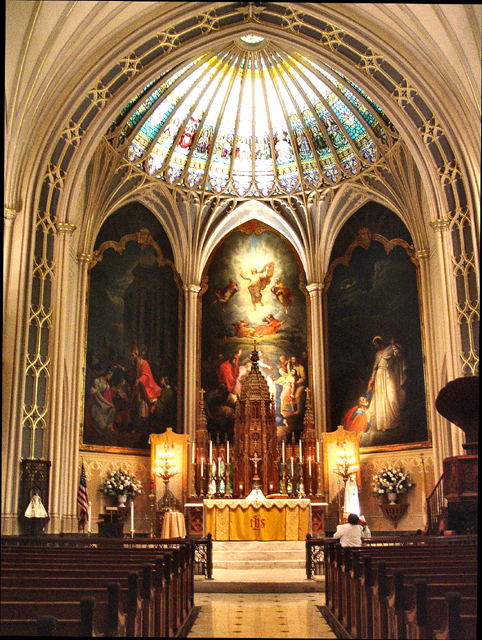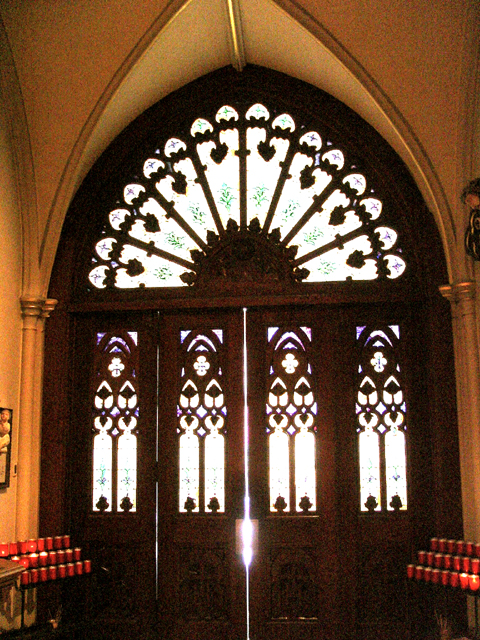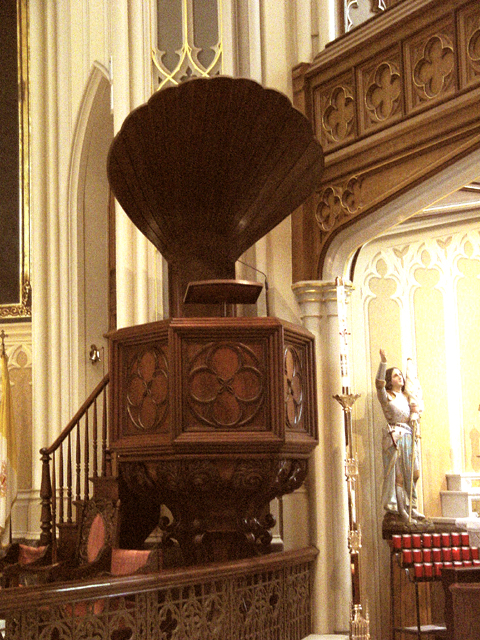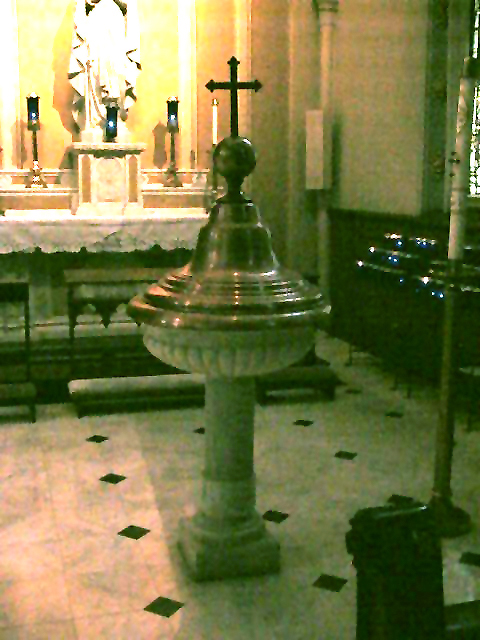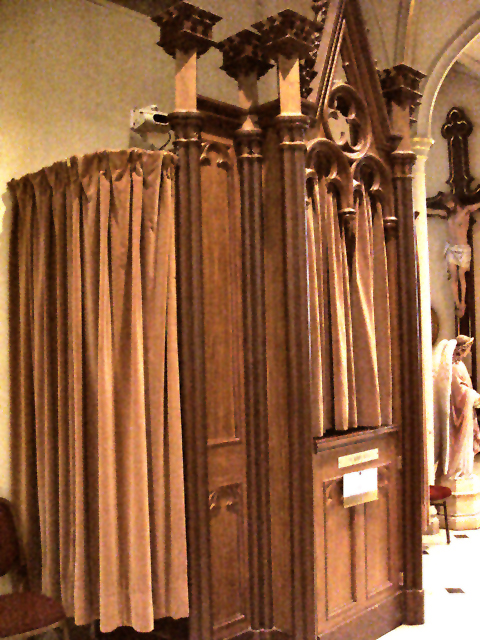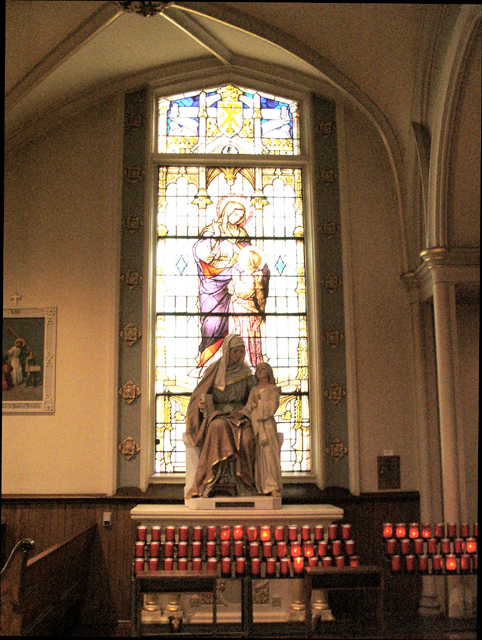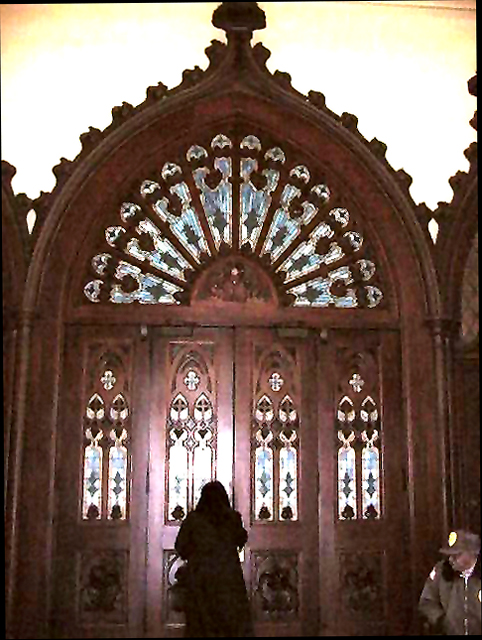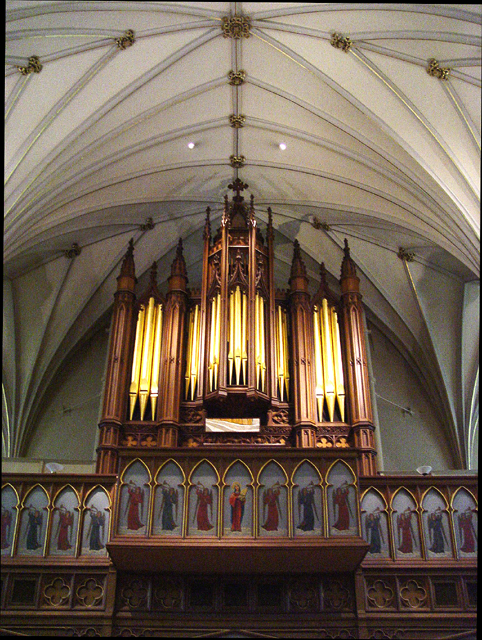724 CAMP ST. NEW ORLEANS, LA.
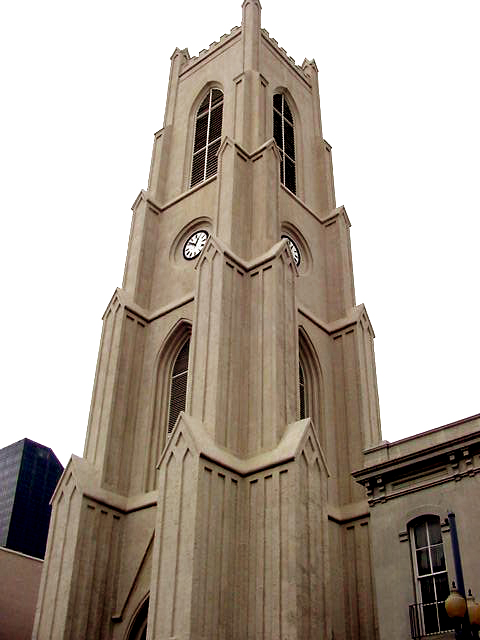
HISTORY OF ST. PATRICK'S CATHOLIC CHURCH
(Information taken from a pamphlet written by Frank L. Schneider and published September 1994)
Saint Patrick's Church dates to 1840 and is a National Historic Landmark. In the early 19th. Century, the city began to move out of Bienville's settlement boundaries of the Vieux Carre. As other nationalities came to New Orleans, they began to expand the city in the direction above Canal Street. This expansion was referred to as the "American Sector" and business men, bankers, and other Americans distinguished themselves from the Creoles who resided in the Vieux Carre. St. Patrick's Church, along with Gallier Hall which formerly served as City Hall prior to the mid-1950's, are the only two early landmarks that still remain in their original state.
The parish was born out of a desire by the Irish of New Orleans to worship in the same splendor that the French enjoyed through St. Louis Cathedral. The architectural style is Gothic and rivals churches of the same type in Europe. The Irish Catholics hired noted architects Charles and James Dakin to design it. The interior is rich in art treasures including paintings, murals, and the finest stained glass. The ceiling is reminiscent of Exeter Cathedral. The bell tower stands 185 feet in height with the naive height of 85 feet.
During construction, foundation problems were encountered and noted architect James Gallier was called in. Gallier succeeded in replacing the foundation without tearing down the walls, which was a monumental task in that era. Gallier became a member of the parish and purchased pew number 27 on the center aisle of the church.
The church has endured many hard times. It has been plagued by financial woes for most of its existence. Although it has withstood storms, Hurricane Betsy dealt substantial damage to the building.
The organ case, shown on the photo collage, is the remains of an original Aristide Cavaille-Coll organ built by the famous French organ builder who also created the organs at Notre Dame, St. Sulpice and and many other French cathedrals. The murals are the work of Leon Pomarede, a young artist who painted them for $1000 each in 1841. The church was built under the administration of Archbishop Antoine Blanc, who received his pallium, as the head of the fourth archdiocese in the United States, at St. Patrick's in 1851. St. Patrick's was used as the City's cathedral while St. Louis Cathedral was being rebuilt. The remains of Father James I. Mullon, a native of Ireland, a veteran of the U.S. Navy in the War of 1812, and the second pastor of St. Patrick's, lie buried beneath the sanctuary.
The late Monsignor John P. Reynolds, whose family lived in the parish in its early days, undertook a monumental restoration project with the help of noted architect Samuel Wilson, Jr. After a dozen years and much determination, St. Patrick's was brought to complete restoration. Today many of St. Patrick's parishioners are from other areas of the city. The church's location in the heart of the commercial district have resulted in a branching out, with many faithful coming from outside of the original parish boundaries. St. Patrick's Church is one landmark that should be seen by every resident and visitor who hold an interest in historic buildings of the area.
